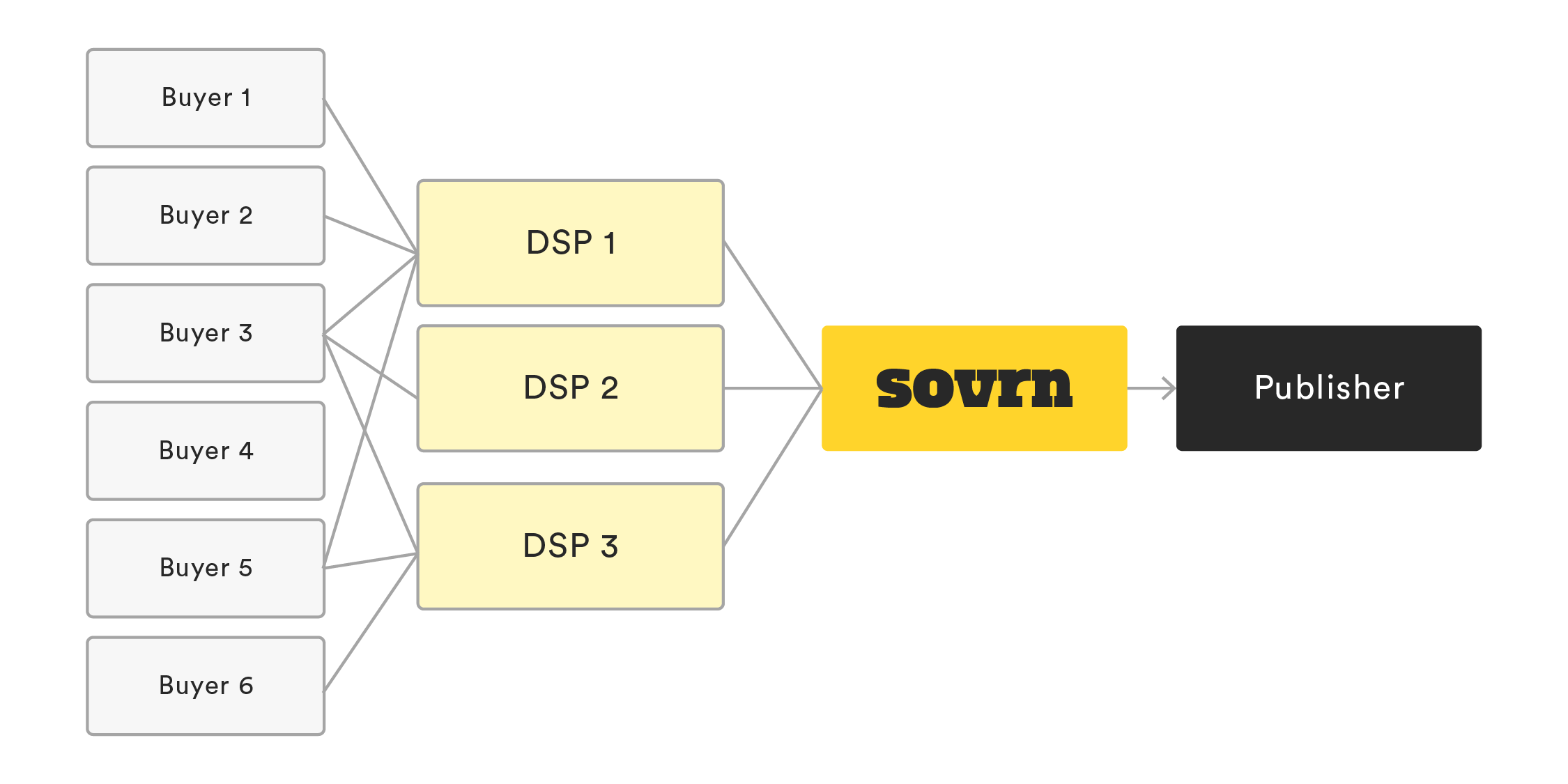Anyone that uses the Internet can most likely tell the difference between a good and bad ad. A good ad fits in well with the site’s content, and provides a positive experience for the site’s user. Conversely, a bad ad simply detracts from the user’s on-page experience and is likely to cause them to leave.
Sovrn consistently ranks as one of the top exchanges when compared to our peers. This is based on how few security violations are served by Sovrn ad tags.
Read on for a full explanation of ad quality and to learn what Sovrn does to resolve bad ads.
Why are low-quality ads bad?
Sovrn takes ad quality seriously and strives to provide publishers with a clean ad experience. Whether it is a loud video ad which cannot be turned off or a mobile redirect taking you away from a site, these ads lead to a poor user experience. Some of the possible consequences of low-quality ads include a decrease in traffic to sites and users deploying ad blockers on their browsers. It goes without saying these are outcomes which can cause a negative impact on digital advertising revenue.
What is considered a bad ad?
There are many different types of bad ads. The main types include autoplay audio, redirects, malware, and unwanted creatives.
- Autoplay audio ads are in banner videos which come through a display and play audio without user interaction and no way to turn them off.
- Redirects can occur on both display and mobile, but it is more common to experience on mobile. These creative automatically takes the user away from the site and usually is accompanied by a message claiming they user is a lucky winner of a gift card or phone.
- Malware is absolutely an unacceptable practice and attempts to damage computer systems and/or hijack private information.
- Unwanted creatives are any type of ads a publisher does not want to serve on their site. Examples of these include political ads, gambling ads, inappropriate content, direct competitors, and IBVs.
Why do these issues occur?
The ultimate goal of ad quality is to prevent prohibited creatives from entering our exchange. Sovrn acts as an intermediary between the buyers and publishers by facilitating a real-time auction. This means we do not create the ads ourselves, and need to filter out low quality ads on our own end. Because of this, bad ad issues occur and continue to pervade the industry due to a few malicious actors, and they’re smart enough to constantly change their behavior to evade detection. While our blocks are effective in capturing the majority of these ads, a few will slip by. This is in part due to the structure of the industry.
The buyer side is made up of multiple types of demand-side platforms (DSPs). Some create the ad campaigns themselves and some source them from other partners. Certain DSPs operate somewhere in the middle as well. DSPs are in the best position to control the quality of ads since they usually have direct relationships with their buyers.

Much like the roots of an aspen grove, exchanges are interconnected and complex. It is possible for a single “bad buyer” to be coming through more than one DSP. Identifying unwanted buyers and who they work with is a great way to clean up the overall ecosystem.
What does Sovrn do to report bad ads?
Sovrn takes multiple steps to prevent low-quality ads from serving on our exchange. In fact, Sovrn was one of the first platforms to integrate with Confiant. Confiant is a tool that Sovrn utilizes to scan all creatives that are in the Sovrn ad exchange, proactively scanning for unsafe javascript, malware, and other malicious software that can hide out in online ads in our inventory and removing any flagged bid from the auction. We can also identify bad buyers based upon which bids we are dropping. Sovrn is consistently one of the top ad exchanges behind Google in how infrequently we serve bad ads.
We are also directly integrated with Human Security to ensure that we’re not monetizing bot traffic, also known as invalid traffic (IVT). We see less than 1% of IVT per month thanks to our partnership with this company.
In the instances when a low-quality ad does get past our filters, we will also work with third-party tools that can scan a publisher’s site and/or their ad tags to track down the source. GeoEdge has the ability to emulate device type, geos, and even social browsers. A tool like this is mainly deployed when dealing with issues on mobile devices because the information necessary to track down the source of display issues are easier to recreate. Sovrn also gives our publishers the ability to filter out ad types and brands they do not want to see served on their site. For example, if you don’t want to see a Taco Bell ad on your vegan site, Sovrn has you covered! There are many different attribute and category blocks available for our publishers. Contact our publisher support team for more information.
What is on the Sovrn ad quality roadmap?
We’re one of the few exchanges that released seat blocking, which gives us the ability to completely remove unwanted buyers from our network. When Sovrn identifies a bad buyer, we can block them immediately without requesting a DSP to block it for us. The tool is currently available at the network level, but it will soon be able to be deployed at the publisher level. This will give publishers even more control over what types of ads can serve on their sites.
Sovrn is constantly working on closing the gaps which allow low-quality ads to evade detection. When these creatives are identified, we work with Confiant to update our library of flagged bids to make sure they are unable to serve again. We also participate in the TAG Anti-Malware Working Group. This group works towards establishing industry standards to combat malware, and Sovrn has been one of the first companies to obtain all TAG certifications to bad ads.
At Sovrn, we take bad ads seriously. If you are experiencing issues with bad ads, please reach out to our support team so they can help your ads get back on track.

